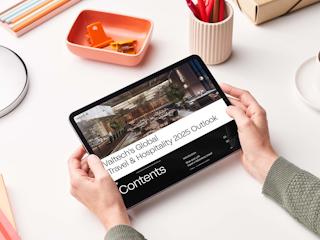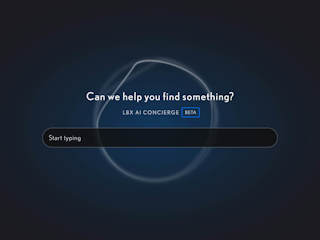1. Get serious (really serious) about customer centricity
Challenge
There’s a fine line between personalization and privacy; customers want the best experiences but they don’t want to hand over the personal data that enables brands to deliver on their expectations. It’s very easy to say that you’re putting customers at the heart of everything you do. Companies regularly tell us that they are absolutely customer centric, but often they are focusing more on their product offering over a solid CX strategy.
To do
Remove the silos, get a hold on the data you have available and start making better decisions based on actual customer insight, across all channels and touch points.
We recognise that becoming truly customer centric will require some organisational changes, and that’s often why companies struggle with really putting these things into practice. But, the rewards will far outweigh the disruption. So, if you’re really going to make the changes that you need to make to put your customers at the heart of your CX Strategy, now is the time to commit.
Remember, siloed organisations can’t truly make sense of all of the data that they have available to them and having control over your customer data is the only way to become more targeted in your outreach across all touchpoints.
If your retail and digital departments are managed independently (or there is disparity between regions, techs or operational structure) there is no way to track online, offline or social behaviour or to truly understand your customers.
2. Innovate away from Commoditization
Challenge
Remember, if you can make it, someone else can probably make it cheaper... Jeff Bezos once said “your margin is my opportunity”… So what can you do to make sure you’re differentiating?
To do
Focus on developing your service offering. Don’t just rely on product development but look at ways to boost the impact of those products by augmenting them with services.
Start innovating your products and make sure that you have the Chief Digital Officer (CDO) and the Chief Product Officer (CPO) in the room at the same time, early on. 2020 is all about bundling products with services and experiences to achieve differentiation and drive customer loyalty.
Think Buy vs Build - We’re talking about Rental Services, the Sharing Economy, connected experiences, combining online and offline experiences and moving from revenue driven to value driven in the new economy of experience.
Start innovating now to draw yourself into new markets, gain new customers and leave the middlemen behind.
3. Change the role of the Store/Distributor
Challenge
Remember that the customer journey isn’t linear and customer sentiment is changing; consumers are increasingly using online options in combination with physical interactions. Brands are also being forced to step in line with more worthwhile expectations; sustainability, carbon footprint and over-consumption and are also looking for new ways to reduce their reliance on their distributors by moving towards Direct to Consumer (DTC) and Direct to Business (DTB) models. If the role and ‘meaning’ of the store is changing, how can brands pivot to keep market share?
To do
It's all about destinations; whether in a store, a car dealership or at an airport, delivering frictionless, memorable experiences that elicit emotion in a digital world will make sure you are future-proofed.
There needs to be a mental shift from stock management, to experiential value. Why keep brick and mortars at all? Physical locations are still going to play a major role, you just need to shift what that looks like to your customer.
Consumers still want to see products in the flesh, get a sense for touch and feel and make comparisons. In fact, some online stores are now opening physical spaces to tailor to the buy online pick up in store (BOPIS) trend.
The important thing is to provide a seamless service that results in a transaction, particularly when the lines between online and offline transactions have been so heavily blurred. Make sure you are putting CX Strategy at the core of whatever you decide to do and remember that there is no one-typical user journey - it’s not linear anymore, so be prepared to keep pivoting.
Customers don’t always need to be wowed by an experience, they just need it to work.
4. Commit to Insight-based actions
Challenge
Another symptom of silos is that is makes it nearly impossible to gather customer insights in a centralised way, and then leverage them to get better business results. Lots of clients are still relying on dashboards to give them the answers they are looking for, (often CEOs will demand a BI dashboard to give them oversight) but unless you’ve been really savvy about exactly what data you’re collecting in the first place, then often you’ll be getting the wrong steer.
To do
Take a more holistic view of your data.
That way, you’ll uncover relationships and insights you might not have considered before. Invest in AI and ML to make real sense out of that raw data and if it makes sense to build a dashboard based on that data then that’s ok too.
Think about moving from a KPI driven to OKR driven approach - a ‘view’ on social media probably isn’t going to lead to a conversion… It’s not enough to have a dashboard, make sure you’re turning those insights into results with actions!
5. Reach for the Cloud(s)
Challenge
As brands grow and as time goes on, it’s not unusual for them to look back at the technical monoliths they have created. Often there’s a focus on fast deployment rather than a more long term architecture. If you find yourself in that situation, should you break up the monolith or do a complete rebuild? Most of the time budget won’t allow for the latter and you need to be able to make changes quickly.
To do
Break up the monolith and think about leveraging MACH technologies (Microservices, APIs, Cloud, Headless).
And no, it’s not always that black and white but it is about having an approach that ensures you can evolve your situation as needed. This can be a gradual transition rather than a giant overhaul (which doesn’t favour budgets or time to market requirements).
Think about extending and adapting the monolith to make it work for you over time and to give you the opportunity to respond to changes down the line. The other point to remember is that a project like this is never finished.
The big mistake many companies make is investing huge amounts to get projects off the ground, but then neglect the support/maintenance needs of the project post go-live. Instead of budgeting for a project, try to think about budgeting for a team over time. It’s much better to have 6 people working full time, as opposed to having 15 people in a room for 6 months with no future plan.
6. Transform by Doing
Challenge
Building an organisation that can achieve all of the above takes a lot of investment, change management and time. But, the key thing is that small iterations can lead to big changes.
Many organisations have become masters in operational excellence and that means that predictability is rewarded; they rely on investing resources into the planning phase of a project. To Transform by doing, you need to take a test-measure-learn approach and that can make people nervous… but the rewards can far outweigh the risks. An iterative approach will speed up your learnings and make things more predictable in the long run, getting you to a better result, faster.
To do
Transform by Doing!
Break down the silos, commit to experimenting and transform by doing. It’s only when you begin to put these things into practice that you will begin to see results. For smaller to medium size companies, this quick experimental approach means that you can learn fast and iterate quickly. If you can, try and build a structured learning process into your day to day operations.
Failures/mistakes aren’t failures or mistakes if they are small and pave the way for learning and improvement.
For larger/enterprise level clients it’s not always so easy to take a ‘fail fast, fail often’ approach. If that’s the case for you, fear not, there is a way around it. Options include investing in smaller experimentation hubs or ‘corporate start ups’ within your organisation that can do smaller test and learn experiments without directly impacting business operations. You can start to build the success stories into the day to day delivery without fear of disruption. It’s a model that many of the banks have adopted over the years - creating smaller start-up ‘challenger banks’ with their own brand but under the corporate umbrella. That way, if it doesn’t work out there’s no negative brand impact. We’ve also seen it with larger CPG clients with really positive results.
You can even go one step further; if it feels too exposing to try it in-house, bring in an agency to do the leg work at the start. They will have the experience to make sure you start on the right foot and get you into a position where you can take over down the line.
Whatever you decide to do, the important thing is that you start.












